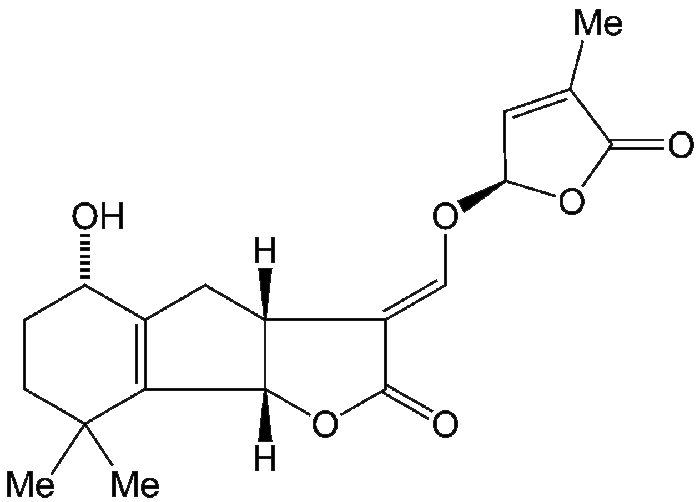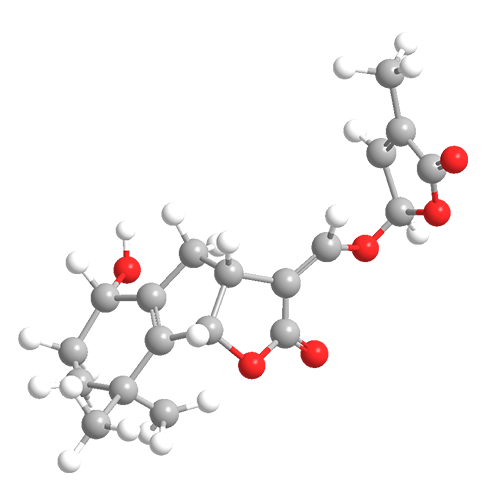What molecule am I?


Strigol is a member of the strigolactone family of plant hormones that are potent root-germination stimulants for some parasitic plants (read “weeds”). Their function is to stimulate the growth of certain fungi that have a symbiotic relationship with the plants.
Strigol takes its name from the African predatory plant witchweed (Striga lutea Lour.), which can wipe out crops such as rice, sorghum, millet, and sugarcane. C. E. Cook at the Research Triangle Institute (NC) and colleagues first isolated it in 1966 from root exudates of cotton (Gossypium hirsutum L.). Six years later, same researchers elucidated its structure. The naturally occurring (+)-enantiomer was first synthesized by Charles J. Sih and co-workers at the University of Wisconsin (Madison) in 1976.
It wasn’t until 2015 that Peter McCourt and colleagues at the University of Toronto discovered how witchweed functions. The weed has exceptionally large strigolactone binding pockets, which allow it to “sniff out” strigol and other strigolactones produced by the food crops. In this way, witchweed recruits symbiotic fungi from the crop plants and essentially starves them.

Learn more about this molecule from CAS, the most authoritative and comprehensive source for chemical information.
Molecule of the Week needs your suggestions!
If your favorite molecule is not in our archive, please send us a message. The molecule can be notable for its current or historical importance or for any quirky reason. Thank you!
Stay Ahead of the Chemistry Curve
Learn how ACS can help you stay ahead in the world of chemistry.

